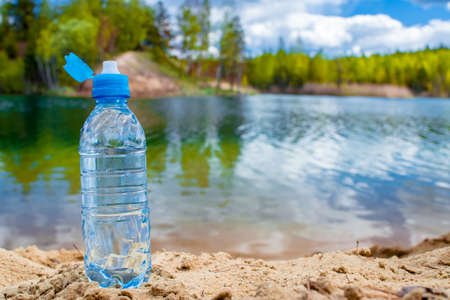1. Understanding Dehydration and Its Risks
In emergency situations like natural disasters, unexpected backcountry mishaps, or extended power outages, staying hydrated becomes one of the most critical survival priorities. Whether youre stuck in a heatwave without air conditioning or stranded during a snowstorm, understanding how dehydration works and why it’s so dangerous can make all the difference.
What Causes Dehydration?
Dehydration happens when your body loses more fluids than it takes in. In emergencies, this can happen faster than youd expect due to:
- Extreme Heat: Sweating heavily without replacing fluids.
- Cold Weather: Cold reduces your thirst sensation, but your body still loses moisture through respiration and urination.
- Physical Activity: Hiking, carrying supplies, or evacuating increases sweat loss.
- Lack of Clean Water: No access to safe drinking water leads people to ration or avoid drinking entirely.
Symptoms of Dehydration
It’s easy to overlook the signs of dehydration until it’s too late. Here are some common symptoms grouped by severity:
| Severity Level | Common Symptoms |
|---|---|
| Mild | Dry mouth, thirst, headache, dark yellow urine |
| Moderate | Dizziness, fatigue, decreased urine output, dry skin |
| Severe | Rapid heartbeat, confusion, sunken eyes, fainting |
The Dangers of Dehydration in Emergencies
Losing even a small percentage of your body’s water can severely impact your ability to think clearly and move efficiently — two things you absolutely need in an emergency. Severe dehydration can lead to heat stroke in hot climates or hypothermia in cold conditions because your body struggles to regulate its temperature without enough fluids.
Why It’s Critical in Extreme Temperatures
- Hot Weather: Your body sweats to cool down. Without fluid replacement, this system fails quickly.
- Cold Weather: You lose fluids through breathing cold air and may not feel thirsty despite being dehydrated.
Quick Tip:
If you’re unsure about your hydration level, check the color of your urine. Pale yellow means youre likely okay; darker shades suggest you need more fluids.
Understanding how dehydration affects you is the first step toward staying safe when the unexpected happens. Whether youre waiting for help after a hurricane or hiking off-trail with limited supplies, recognizing the early signs and knowing what to do can keep an inconvenience from becoming a life-threatening situation.
2. Recognizing Signs of Dehydration
In emergency situations, especially during camping or survival scenarios, dehydration can sneak up on you faster than youd think. Whether youre out in the heat or simply without access to clean water, knowing how to spot the signs of dehydration early can make a big difference — especially when youre caring for others like kids or older adults.
Common Symptoms of Dehydration
Dehydration symptoms can range from mild to severe. It’s important to recognize them early so you can take action before it becomes a serious health issue. Heres a quick breakdown:
| Severity | Adults | Children |
|---|---|---|
| Mild | – Dry mouth – Thirst – Slight headache – Dark yellow urine |
– Dry lips – Irritability – Less frequent urination – Slight fatigue |
| Moderate | – Dizziness – Dry skin – Rapid heartbeat – Fatigue |
– Sunken eyes – No tears when crying – Cool, blotchy hands and feet – Increased sleepiness |
| Severe | – Confusion – Very dry skin and mouth – Low blood pressure – Rapid breathing |
– Lethargy or unconsciousness – Very dry mouth and tongue – No urine output for several hours – Cold extremities |
Why These Signs Matter in Survival Situations
When youre in the wild or facing an emergency, your body is already under stress. Dehydration makes things worse by affecting your energy levels, decision-making ability, and physical strength. For example, feeling dizzy while hiking or setting up camp could lead to injuries. In kids, dehydration can escalate quickly because their bodies don’t regulate fluids as well as adults.
Dizziness and Fatigue
If you feel lightheaded or unusually tired, it could mean your body is running low on fluids. This is often one of the first warning signs that you need to hydrate immediately.
Dry Mouth and Dark Urine
A sticky or dry mouth might seem minor but it’s actually a sign your body needs water. Pay attention to the color of your urine too — the darker it is, the more dehydrated you are.
Signs in Children You Shouldn’t Ignore
Kiddos may not always tell you they’re thirsty, so watch for behavioral changes like crankiness or unusual sleepiness. If they stop peeing regularly or have no tears when crying, its time to act fast.
Quick Tip:
If you pinch the skin on the back of your hand and it doesn’t snap back quickly, that’s a classic sign of dehydration — try it on yourself or someone else if youre unsure.
Next Steps When You Spot These Signs
If any of these symptoms show up during an emergency situation, don’t wait — start rehydrating with clean water immediately. If clean water isn’t available yet, use safe purification methods first (we’ll cover that in another section). The goal is to catch dehydration early before it turns into a medical emergency.

3. Sourcing Water Safely in the Wild
When youre out in the wild and face an emergency, finding clean water becomes a top priority. Your body can only survive for about three days without water, so knowing where and how to find it safely is crucial. Here’s how you can locate water sources and what to watch out for.
Reliable Natural Water Sources
In the backcountry, not all water is safe to drink straight from the source. However, certain natural sources are more reliable than others. Here’s a quick guide:
| Water Source | Pros | Cons |
|---|---|---|
| Flowing Streams or Rivers | Usually cleaner due to movement; easier to spot | May still contain bacteria or parasites; avoid near campsites or downstream of livestock |
| Lakes or Ponds | Easier to collect water from | Can be stagnant and full of bacteria or algae |
| Rainwater Collection | Chemically pure; no ground contamination | Depends on weather; requires collection system (tarp, containers) |
| Morning Dew | A vailable even in dry areas; doesn’t need a large source nearby | Time-consuming to collect enough; may require cloth or plastic sheeting |
How to Collect Rainwater and Dew
Rainwater Tips:
- Tie a tarp between trees to create a funnel into a container.
- Avoid collecting rainwater from dirty surfaces like tents or leaf-covered tarps.
Dew Collection Tips:
- Use a clean cloth or shirt to wipe dew off grass and leaves early in the morning.
- Squeeze collected moisture into a container.
Avoid These Unsafe Water Sources
No matter how thirsty you get, some sources should be avoided unless youre able to purify the water properly:
- Stagnant Water: Pools of still water often harbor bacteria, parasites, and mosquitoes.
- Puddles with Animal Tracks: These are likely contaminated by feces or urine.
- Irrigation Ditches: May contain pesticides or other chemicals unsafe for human consumption.
A Few Extra Tips for Spotting Water in the Wild
- Look for green vegetation, especially in dry areas—it often signals underground moisture or a nearby spring.
- Bugs and animals tend to gather near water—follow birds flying low at dawn or dusk as they often head toward water sources.
The key is to always purify any collected water before drinking. Even clear-looking streams can carry harmful microbes. In upcoming sections, we’ll cover methods for making your water safe once you’ve found it.
4. Water Purification Techniques
In emergency situations, having access to safe drinking water is crucial. Contaminated water can lead to serious health issues like diarrhea, cholera, or other waterborne illnesses. Whether youre dealing with a natural disaster, camping off-grid, or facing an unexpected survival scenario, knowing how to purify water can be a lifesaver. Below are some of the most effective methods used in the U.S. for making water safe to drink, including their pros and cons.
Boiling
Boiling is one of the oldest and most reliable ways to kill bacteria, viruses, and parasites in water.
How To:
Bring water to a rolling boil for at least 1 minute (or 3 minutes at elevations above 6,500 feet).
Pros:
- Highly effective against most pathogens
- No need for special equipment beyond a heat source and container
- Simple and accessible method
Cons:
- Does not remove chemicals or heavy metals
- Requires fuel or power source
- Time-consuming and not ideal for large quantities
Water Purification Tablets
Purification tablets often contain iodine, chlorine dioxide, or other disinfectants that neutralize harmful microorganisms.
How To:
Dissolve the tablet in the recommended amount of water and wait typically 30 minutes before drinking.
Pros:
- Lightweight and portable—great for go-bags or backpacking kits
- No need for electricity or fire
- Effective against most bacteria and viruses
Cons:
- Taste may be unpleasant
- Some tablets are not effective against all parasites (like Cryptosporidium)
- Chemical sensitivity could be a concern for some people
UV Light Filters (UV Purifiers)
Ultraviolet light devices use UV rays to kill bacteria, viruses, and protozoa by destroying their DNA.
How To:
Insert the device into your bottle of clear water and activate it according to the manufacturers instructions—usually takes around 60 seconds per liter.
Pros:
- Fast and effective disinfection method
- No change in taste or smell of water
- Reusable device makes it cost-effective over time
Cons:
- Ineffective in cloudy or murky water unless pre-filtered
- Batteries required—dependent on power supply
- Higher upfront cost compared to tablets or boiling
Portable Water Filtration Systems
These systems include pump filters, straw-style filters (like LifeStraw), gravity filters, or squeeze bottles with built-in filters.
How To:
Follow specific instructions for your filter type—most involve either sucking through a straw or pumping/squeezing water through a cartridge filter.
| Type of Filter | Main Feature | Effective Against |
|---|---|---|
| Squeeze/Straw Filters | Small and easy to carry | Bacteria & Parasites (some models also remove viruses) |
| Pump Filters | Larger capacity; good for groups | Bacteria, Parasites; optional carbon filters remove taste/chemicals |
| Gravity Filters | No pumping required; great for campsites | Bacteria & Parasites (depends on model) |
Pros:
- No need for chemicals or power sources (except some electric pumps)
- Removes particulates as well as microbes (depending on filter rating)
- User-friendly options available for individuals and families alike
Cons:
- Might not eliminate all viruses unless specified (especially smaller pore filters)
- Filter cartridges require replacement over time and can clog with dirty water
- Larger systems can be bulky for solo travel or emergencies on-the-go
Selecting the right purification method depends on your specific situation—whether youre on foot, sheltering at home without utilities, or camping with family. Having multiple options ready ensures youre prepared no matter what comes your way.
5. Emergency Water Storage and Planning
When disaster strikes, having safe drinking water on hand can be a lifesaver. Whether youre hunkering down at home, traveling in your vehicle, or bugging out to a safer location, it’s important to store water properly and follow expert guidelines. Heres how to plan ahead and make sure your water supply is ready when you need it most.
Home Water Storage
The Federal Emergency Management Agency (FEMA) recommends storing at least one gallon of water per person per day for a minimum of three days. However, for better preparedness, many preppers aim for two weeks worth of water.
Recommended Water Quantities
| Household Size | Minimum 3-Day Supply | Preferred 2-Week Supply |
|---|---|---|
| 1 Person | 3 gallons | 14 gallons |
| 2 People | 6 gallons | 28 gallons |
| 4 People | 12 gallons | 56 gallons |
You can store water in food-grade containers such as 5-gallon jugs, 55-gallon barrels, or stackable water bricks. Make sure to label each container with the date and keep them in a cool, dark place away from chemicals or gasoline.
Water Storage in Vehicles
If you travel frequently or live in an area prone to wildfires or hurricanes, keeping an emergency water stash in your vehicle is smart. Use sturdy plastic bottles that won’t break easily during temperature changes. Avoid glass containers since they can shatter.
- Store at least 1-2 gallons per person in your car.
- Add electrolyte drink packets or purification tablets to your glove box.
- Avoid leaving full containers under direct sunlight for long periods; rotate them regularly.
Bug-Out Bag Water Solutions
Your bug-out bag should include lightweight and versatile options for both carrying and purifying water:
- A collapsible water bottle or hydration bladder (1-2 liters)
- A compact water filter like a LifeStraw or Sawyer Mini
- Purification tablets as backup (e.g., iodine or chlorine dioxide)
Water Rotation and Maintenance Tips
Bottled water typically has a shelf life of up to two years if stored properly, but its good practice to rotate your supply every six months.
Water Rotation Checklist:
- Date each container when filled or purchased.
Treating Tap Water for Long-Term Storage
If youre filling containers with tap water that isn’t already chlorinated (like well water), treat it first:
- Add 1/8 teaspoon (about 8 drops) of unscented household bleach per gallon of water.
Cultural Considerations for American Households
A lot of U.S. homes have basements or garages — perfect spots for storing large quantities of water safely. If space is limited, consider under-bed storage bins or closet-friendly stackable containers. For families with pets, remember to account for their needs too by storing extra gallons just for them.
6. Hydration Strategies for High-Stress Situations
In emergency scenarios—whether its a natural disaster, extended power outage, or survival situation—stress levels rise quickly. Physical exertion, emotional strain, and limited resources can all lead to rapid dehydration. Knowing how to stay hydrated under pressure is crucial for everyone involved—including kids, seniors, and even pets.
Rationing Water Wisely
When water is in short supply, its important to ration carefully without underhydrating. Contrary to popular belief, its not always best to drink as little as possible. Instead, drink small amounts regularly to keep your body functioning properly. Avoid heavy exertion during peak heat hours to reduce sweat loss.
Basic Water Needs Per Day (in Emergency Conditions)
| Group | Minimum Water Needed |
|---|---|
| Adults | 1 gallon (3.8 liters) |
| Children | 0.5–1 gallon (1.9–3.8 liters) |
| Seniors | 0.75–1 gallon (2.8–3.8 liters) |
| Pets (Dogs/Cats) | 0.25–1 gallon depending on size |
Using Electrolyte Solutions
During emergencies where stress and physical activity are high, electrolytes become just as important as water itself. Sodium, potassium, and magnesium help regulate fluid balance and prevent cramps or fatigue.
DIY Electrolyte Drink Recipe
- 1 quart (32 oz) clean water
- 1/4 tsp salt
- 1/4 tsp baking soda
- 2 tbsp sugar or honey
- A splash of lemon or lime juice for flavor (optional)
This homemade solution can be a lifesaver when commercial sports drinks aren’t available.
Caring for Vulnerable Groups
Children:
Kiddos dehydrate faster than adults because of their smaller body size and higher activity levels. Offer fluids regularly—even if they don’t ask—and monitor for signs like dry lips, fatigue, or fewer wet diapers.
Seniors:
Older adults often feel less thirsty but still need hydration. Offer water consistently and check for signs of confusion or dizziness, which may indicate dehydration.
Pets:
Your furry friends rely on you completely in an emergency. Always have extra water set aside for them and avoid letting them drink from puddles or questionable sources unless treated first.
Tips to Maximize Limited Water Supply
- Store water in sealed containers before an emergency hits
- Use purification tablets or filters when collecting from natural sources
- Avoid salty snacks that increase thirst unless balanced with extra water intake
- Conserve sweat—not just water—by resting during hot periods of the day
The key to surviving stressful situations is staying ahead of dehydration before it becomes a medical issue. Small steps like regular sips of clean water and smart use of electrolytes go a long way in protecting yourself and your loved ones.

